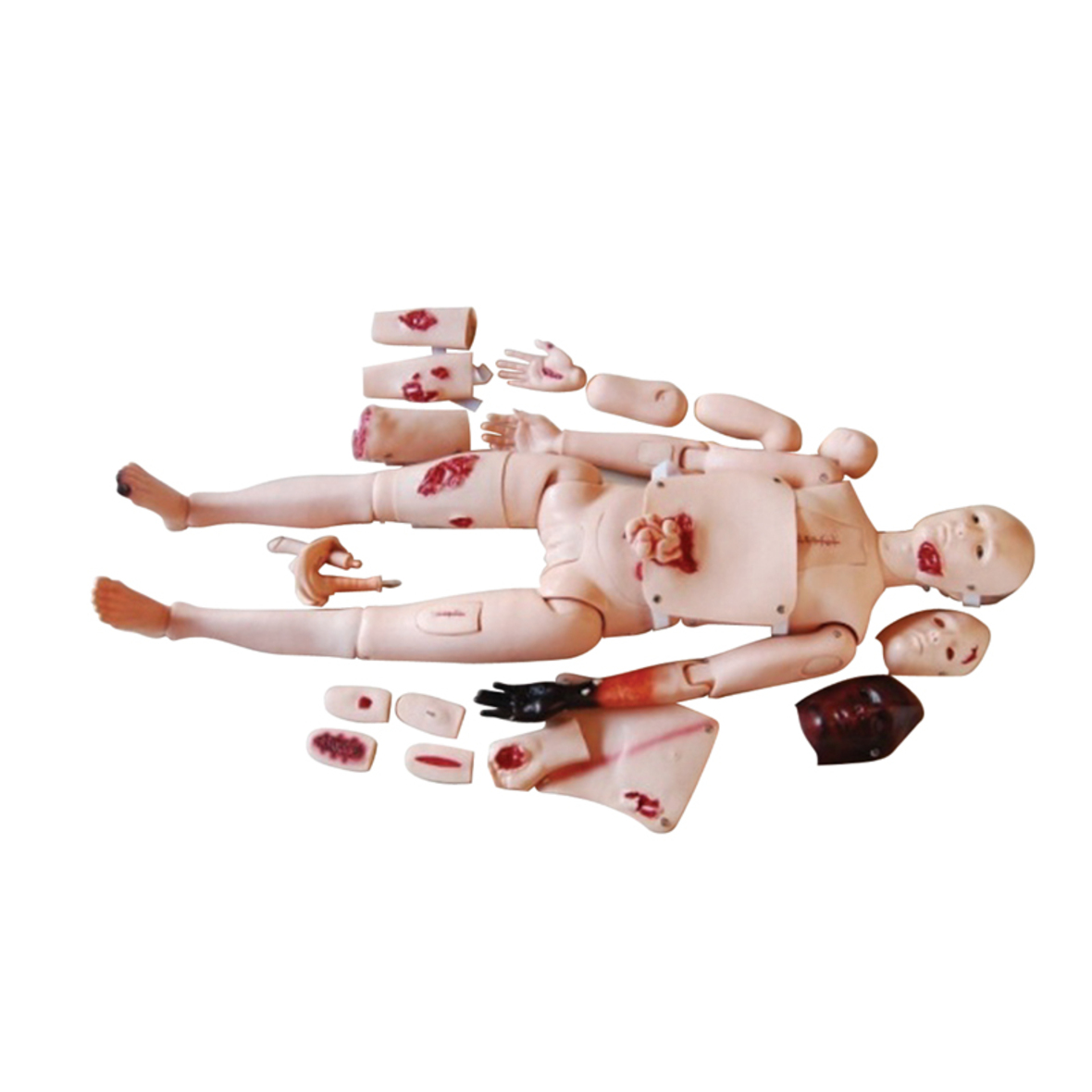Homepageпјҡ NEWS >> How to apply trauma simulator to actual operations
As an important tool for modern medical training, the application of trauma simulator is not only limited to the teaching of theoretical knowledge, but also the cultivation of practical operation ability. Applying trauma simulators to actual operations means closely integrating simulation scenarios with real treatment processes, so that medical staff can exercise and improve their actual operation skills in simulations.

In actual operation, we first need to select an appropriate trauma simulator based on the training objectives. Different simulators have different injuries and physiological reactions, and can simulate various situations from minor scratches to severe trauma. Based on the training needs of medical staff, we can select simulators with specific injuries or a combination of injuries to provide a more realistic training environment.
Next, we need to set up the simulation scenario. This includes simulating the medical environment, patient conditions, treatment procedures, etc. By simulating real medical environments, such as emergency rooms, operating rooms, etc., we can allow medical staff to perform simulated operations in a familiar environment. At the same time, it is also crucial to simulate the patient's injury and physiological response, which can help medical staff better understand the patient's condition and make correct treatment decisions.
In simulated operations, we also need to pay attention to the teamwork and communication skills of medical staff. In actual operations, medical staff often need to work closely with other team members to jointly deal with complex treatment tasks. Therefore, in simulated operations, we can organize medical staff to conduct team exercises so that they can learn how to collaborate, how to communicate, and how to jointly respond to emergencies in simulated scenarios.
In addition, we also need to develop detailed evaluation criteria to objectively evaluate the performance of medical staff in simulated operations. Evaluation criteria can include operating procedures, treatment measures, treatment effects and other aspects. Through the evaluation results, we can discover problems and deficiencies in the operation of medical staff and give corresponding improvement suggestions. At the same time, we can also use the evaluation results as an important reference for the effectiveness of medical staff training and provide guidance for their future practical operations.
In addition to the above aspects, we also need to pay attention to the maintenance and upkeep of the trauma simulator. As a precision teaching tool, the simulator requires regular maintenance and upkeep to ensure its normal operation and long-term use. We should perform correct operation and maintenance according to the instructions for use of the simulator to avoid damage or performance degradation of the simulator caused by improper use.
In summary, applying trauma simulators to actual operations requires us to pay attention to many aspects such as the setting of the simulation scene, the teamwork and communication skills of medical staff, the formulation of evaluation standards, and the maintenance and upkeep of the simulator. Only in this way can we give full play to the role of trauma simulators in medical training and provide medical staff with a more efficient and practical training experience.